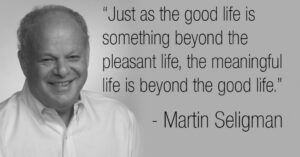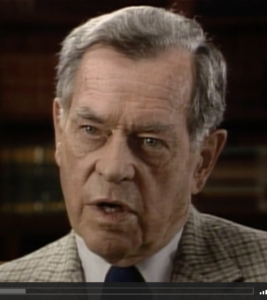This post is based on the following chapter in the Encyclopedia of Heroism Studies:
- Allison, S. T. (2023). Follow Your Bliss and Heroism. In S. T. Allison, J. K. Beggan, and G. R. Goethals (Eds.), Encyclopedia of Heroism Studies. New York: Springer.
Joseph Campbell’s phrase ‘Follow your bliss’ offers a path to discovering joy, meaning, and a sense of being fully alive. Campbell introduced the term in the 1970s, and since his passing in 1987, it has deeply influenced popular culture, positive psychology, and the self-help movement.
Let’s explore Campbell’s concept of bliss, his guidance on how to pursue it, how the phrase has been misunderstood over time, and how heroism researchers have incorporated the pursuit of bliss into their studies on living a heroic life.
Definitions of Bliss
Dictionary definitions of bliss refer to a person’s sense of complete joy, happiness, and deep satisfaction with their life’s purpose and vocation (e.g., Merriam-Webster 2023). In positive psychology, many concepts are similar to the experience of bliss. Abraham Maslow (1943) introduced the idea of self-actualization, which represents the highest level of human development, where an individual realizes their full potential. By emphasizing people’s innate drive to become their best selves, Maslow and other person-centered therapists laid the foundation for a humanistic approach in psychology, which eventually influenced the development of modern positive psychology.
Of all the concepts in positive psychology, the state of flourishing may be the closest to Campbell’s idea of bliss. Martin Seligman’s (2012) comprehensive study of flourishing found that it involves a sense of fulfillment, the completion of meaningful tasks, and the formation of deep emotional connections with others. According to Seligman, flourishing is achieved by aligning with the PERMA model, which highlights five core components of well-being: positive emotions, engagement, relationships, meaning, and accomplishments. Rather than being a fixed trait, flourishing comes from pursuing tasks that one is passionate about. To flourish is to live an authentic, fulfilling life that brings joy and happiness.
deep emotional connections with others. According to Seligman, flourishing is achieved by aligning with the PERMA model, which highlights five core components of well-being: positive emotions, engagement, relationships, meaning, and accomplishments. Rather than being a fixed trait, flourishing comes from pursuing tasks that one is passionate about. To flourish is to live an authentic, fulfilling life that brings joy and happiness.
Campbell’s concept of bliss shares similarities with Seligman’s idea of flourishing. In his 1985 interview with Bill Moyers, Campbell (1988, 120) explained that If you follow your bliss, you put yourself on a kind of track that has been there all the while, waiting for you, and the life that you ought to be living is the one you are living.” Essentially, Campbell saw bliss as the ability to pursue life goals that align with one’s personal strengths and sources of joy. He also highlighted the social aspect of the hero’s journey, noting that, “You begin to meet people who are in the field of your bliss, and they open the doors to you…. [and] doors will open where you didn’t know they were going to be” (p. 120).
Campbell (1991, 148) described bliss as the state where a person’s life is in harmony with their environment. He wrote, “The goal of life is to make your heartbeat match the beat of the universe, to match your nature with Nature.” Similarly, Richard Rohr (2009) proposed that joy and happiness come from achieving what he calls resonance, which means being in tune with the universe. This resonance is cultivated through meditation that focuses on aligning one’s inner calling with external cues. Rohr likens this process to using a tuning fork to create perfect harmony with one’s surroundings. Campbell also believed that bliss arises from achieving this kind of physical and spiritual resonance with one’s deepest self.
Pathways to Bliss
Campbell (2004) offered insights into the process of discovering one’s bliss, emphasizing that the journey is challenging and demands courage, intuition, and support from allies and mentors. Each person’s path to bliss is unique and often hidden or difficult to recognize. As Campbell noted, “You enter the forest at the darkest point where there is no path,” meaning that following an established path often leads to someone else’s journey, not your own. The key question for anyone seeking bliss is: How can they identify their own path? Campbell suggests three possible methods for doing so.
- The first path involves following the stages of the mythic hero’s journey, as outlined by Campbell in his influential 1949 work The Hero with a Thousand Faces. This journey includes leaving the hero’s familiar world, navigating a dangerous new environment, meeting allies, facing villains, undergoing personal transformation, and returning home as a more evolved individual. The hero’s journey is a humbling process that expands the hero’s capacity for growth, learning, and maturity. Campbell (1991, 21) noted that “opportunities to find deeper powers within ourselves come when life seems most challenging,” highlighting how adversity can lead to personal development.
- The second path to finding bliss involves engaging in spiritual practices aimed at fostering a positive mindset that is open to new directions in life. These practices include mindful meditation, yoga, gratitude, forgiveness, humility, loving-kindness, and presence. While rooted in religion and philosophy, modern scientific research has confirmed their positive effects (Jones 2019). Studies show that these practices benefit brain regions associated with emotional regulation, well-being, pain tolerance, body awareness, introspection, and self-image (Breedvelt et al. 2019). People who engage in such practices often report greater clarity about their life’s purpose and direction (Cahn et al. 2017).
- The third path to bliss is the experience of profound love. For those pursuing religious transformation, this love is often directed toward a higher power, leading to spiritual awakening. For those on the hero’s journey, this love may take the form of newfound compassion for humanity or romantic love for an idealized partner. Examples of characters who find bliss through love in film and literature include Ebenezer Scrooge (*A Christmas Carol*), Lieutenant Dan (*Forrest Gump*), the Grinch (*How the Grinch Stole Christmas*), and Phil Connors (*Groundhog Day*). These characters, who begin as deeply flawed, only find their bliss through the transformative power of love. Often, they endure significant suffering, but by discovering love—whether for an individual or all of humanity—they are relieved of their suffering and granted the gift of bliss.
Conclusion
Campbell (1988) stressed that the path to bliss is filled with uncertainty. He emphasized that the ancient spiritual language of Sanskrit uses three terms to signify the gateway to transcendent bliss: *sat*, *chit*, and *ananda*. In Sanskrit, “sat” means being, “chit” means consciousness, and “ananda” means bliss. Campbell acknowledged that he was unsure whether his consciousness or his way of being were ideal, but he was certain about the source of his bliss—his study of world mythology. He decided to focus on what brought him bliss, hoping it would enlighten both his consciousness and his being. “I think it worked,” he reflected (p. 96).
Campbell firmly believed that experiencing bliss is a fundamental aspect of being human, and he was critical of the religious focus on achieving bliss only in the afterlife. He remarked, “Religious people tell us we won’t truly experience bliss until we die and go to heaven. But I believe in experiencing as much of it as possible while we’re still alive.”
= = =












